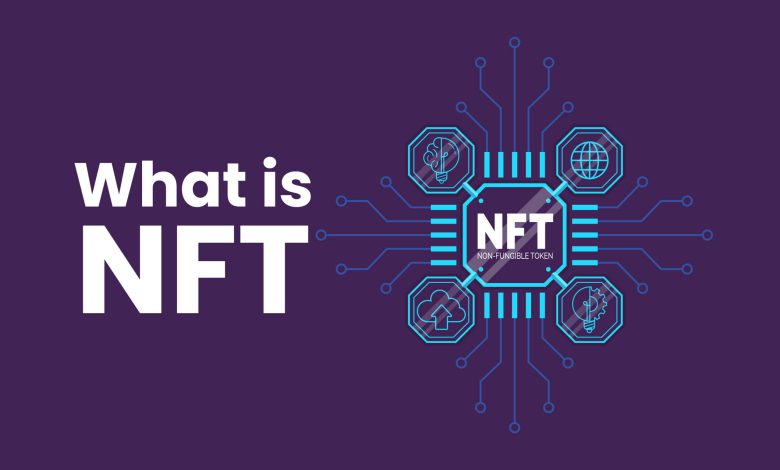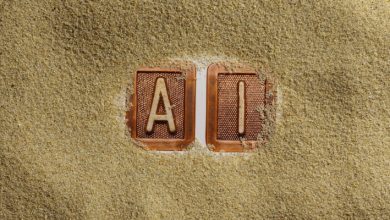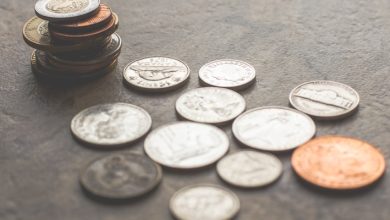Introduction to NFTs: What You Need to Know

- Understanding the basics of NFTs
- Exploring the concept of non-fungible tokens
- How NFTs are revolutionizing the digital art world
- Key features of NFTs and their significance
- The process of buying and selling NFTs
- Potential risks and challenges associated with NFTs
Understanding the basics of NFTs
NFTs, or Non-Fungible Tokens, have gained significant popularity in recent years as a new form of digital asset. These unique tokens represent ownership of a specific item or piece of content on the blockchain. Unlike cryptocurrencies such as Bitcoin or Ethereum, which are fungible and can be exchanged on a one-to-one basis, NFTs are one-of-a-kind and cannot be replicated.
One key aspect to understand about NFTs is that they are indivisible, meaning they cannot be divided into smaller units like cryptocurrencies can. This uniqueness is what gives NFTs their value and appeal to collectors and investors alike. NFTs can represent a wide range of digital assets, including art, music, videos, virtual real estate, and even tweets.
When someone purchases an NFT, they are essentially buying a digital certificate of ownership that is stored on the blockchain. This certificate includes information about the creator of the NFT, its current owner, and details about the asset itself. The blockchain ensures that the ownership of the NFT is secure and cannot be tampered with.
One of the most significant advantages of NFTs is that they allow creators to monetize their digital work in new and innovative ways. Artists, musicians, and other content creators can sell their work directly to consumers as NFTs, cutting out middlemen and potentially earning more revenue. Additionally, NFTs can be programmed with smart contracts that automatically pay royalties to creators whenever their work is resold.
Overall, NFTs represent a groundbreaking development in the world of digital assets, offering a new way for creators to showcase and monetize their work. As the technology continues to evolve, NFTs are likely to play an increasingly important role in the digital economy.
Exploring the concept of non-fungible tokens
Non-fungible tokens (NFTs) have gained significant attention in recent years as a unique form of digital asset. Unlike cryptocurrencies such as Bitcoin or Ethereum, which are interchangeable and have the same value, NFTs are one-of-a-kind and cannot be exchanged on a like-for-like basis. This concept of non-fungibility is what sets NFTs apart and makes them valuable to collectors and investors alike.
NFTs are built on blockchain technology, which ensures the authenticity and ownership of each token. This means that each NFT is verifiable and cannot be duplicated or tampered with. The blockchain acts as a digital ledger that records the ownership and transaction history of each NFT, providing transparency and security to buyers and sellers.
One of the key features of NFTs is their ability to represent ownership of digital or physical assets, such as art, music, videos, or even real estate. This opens up a world of possibilities for creators to monetize their work and for collectors to own unique pieces of digital history. The scarcity and uniqueness of NFTs make them highly sought after in the digital marketplace.
As the popularity of NFTs continues to grow, so does the debate around their value and sustainability. Critics argue that the NFT market is speculative and volatile, with prices fluctuating wildly based on trends and hype. Proponents, on the other hand, see NFTs as a revolutionary way to tokenize and trade assets in a decentralized and secure manner.
In conclusion, exploring the concept of non-fungible tokens reveals a fascinating intersection of technology, art, and finance. Whether you are an artist looking to showcase your work, a collector seeking to own a piece of digital history, or an investor looking to diversify your portfolio, NFTs offer a unique opportunity to participate in the digital economy.
How NFTs are revolutionizing the digital art world
NFTs, or non-fungible tokens, have been making waves in the digital art world, revolutionizing how artists create, sell, and collect digital artwork. These unique tokens are built on blockchain technology, making each piece of art one-of-a-kind and easily verifiable. This has opened up a whole new world of possibilities for artists, allowing them to directly sell their work to collectors without the need for intermediaries.
One of the key benefits of NFTs is that they provide artists with a way to prove ownership and authenticity of their digital creations. This has been a game-changer for digital artists who have struggled to protect their work from being copied or stolen. With NFTs, artists can create scarcity in the digital art world, just like physical art pieces, making their work more valuable and collectible.
Collectors are also benefiting from the rise of NFTs, as they now have the opportunity to own unique pieces of digital art that can be bought, sold, and traded on various online platforms. This has created a new market for digital art, with some pieces selling for millions of dollars. The ability to own a piece of digital art that is verifiably scarce and authentic has attracted a whole new audience to the art world.
Key features of NFTs and their significance
NFTs, or Non-Fungible Tokens, have gained significant popularity in recent years due to their unique features and capabilities. These digital assets are one-of-a-kind and cannot be replicated, making them highly valuable in the digital world. Some key features of NFTs and their significance include:
– **Scarcity**: NFTs are scarce by design, as each token is unique and cannot be duplicated. This scarcity adds value to the digital asset, making it desirable for collectors and investors alike.
– **Ownership**: NFTs are stored on a blockchain, which provides a transparent and secure record of ownership. This ensures that the owner of an NFT has full control over the digital asset and can prove ownership without any dispute.
– **Interoperability**: NFTs can be bought, sold, and traded on various online marketplaces and platforms. This interoperability allows for easy transfer of ownership and liquidity for NFT holders.
– **Indivisibility**: NFTs cannot be divided into smaller units like cryptocurrencies, as each token represents a whole digital asset. This indivisibility adds to the uniqueness and value of NFTs.
– **Provenance**: The blockchain technology used in NFTs provides a clear record of the token’s history, including its creation, ownership, and transfer. This provenance adds authenticity and trust to the digital asset.
Overall, the key features of NFTs make them a valuable and innovative asset class in the digital world. Their scarcity, ownership, interoperability, indivisibility, and provenance contribute to their significance and appeal to a wide range of users, from artists and creators to collectors and investors.
The process of buying and selling NFTs
The process of buying and selling NFTs involves several steps that are essential to understand for anyone looking to participate in this digital asset market. Here is a breakdown of how the process typically works:
- Research: Before diving into the world of NFTs, it is crucial to conduct thorough research to understand what NFTs are, how they work, and what makes them valuable. This will help you make informed decisions when buying or selling NFTs.
- Choose a Marketplace: There are several online marketplaces where you can buy and sell NFTs, such as OpenSea, Rarible, and Foundation. Each marketplace has its own unique features and offerings, so it is essential to choose one that aligns with your goals and preferences.
- Create a Digital Wallet: In order to buy or sell NFTs, you will need a digital wallet to store your digital assets securely. Make sure to choose a reputable wallet provider to ensure the safety of your NFTs.
- Buy NFTs: When buying NFTs, you will need to browse through the marketplace to find NFTs that interest you. Once you find an NFT you want to purchase, you can place a bid or buy it outright, depending on the seller’s preferences.
- Sell NFTs: If you are looking to sell NFTs, you can list your digital assets on a marketplace of your choice. Make sure to set a fair price for your NFTs based on market trends and demand to attract potential buyers.
Overall, the process of buying and selling NFTs can be an exciting and potentially lucrative venture for those interested in digital assets. By following these steps and staying informed about the NFT market, you can navigate this emerging industry with confidence and success.
Potential risks and challenges associated with NFTs
When considering the potential risks and challenges associated with NFTs, it is important to be aware of certain factors that could impact your experience with these digital assets. Some of the key risks and challenges to keep in mind include:
- Volatility: The value of NFTs can be highly volatile, meaning that their prices can fluctuate dramatically in a short period of time. This can result in significant financial losses for investors.
- Security: NFTs are stored on blockchain networks, which are not immune to hacking and security breaches. If a hacker gains access to your NFTs, you could lose them permanently.
- Legal issues: The legal status of NFTs is still evolving, and there may be regulatory challenges that arise in the future. It is important to stay informed about the legal implications of owning and trading NFTs.
- Counterfeiting: NFTs can be replicated or counterfeited, leading to issues of authenticity and ownership. It is crucial to verify the authenticity of an NFT before purchasing it.
- Lack of liquidity: Some NFTs may be difficult to sell or trade, especially if there is a lack of demand for them. This can make it challenging to convert your NFTs back into fiat currency.
By being aware of these risks and challenges, you can make more informed decisions when it comes to buying, selling, and trading NFTs. It is important to do your own research and due diligence before investing in any NFTs to mitigate these potential risks.




